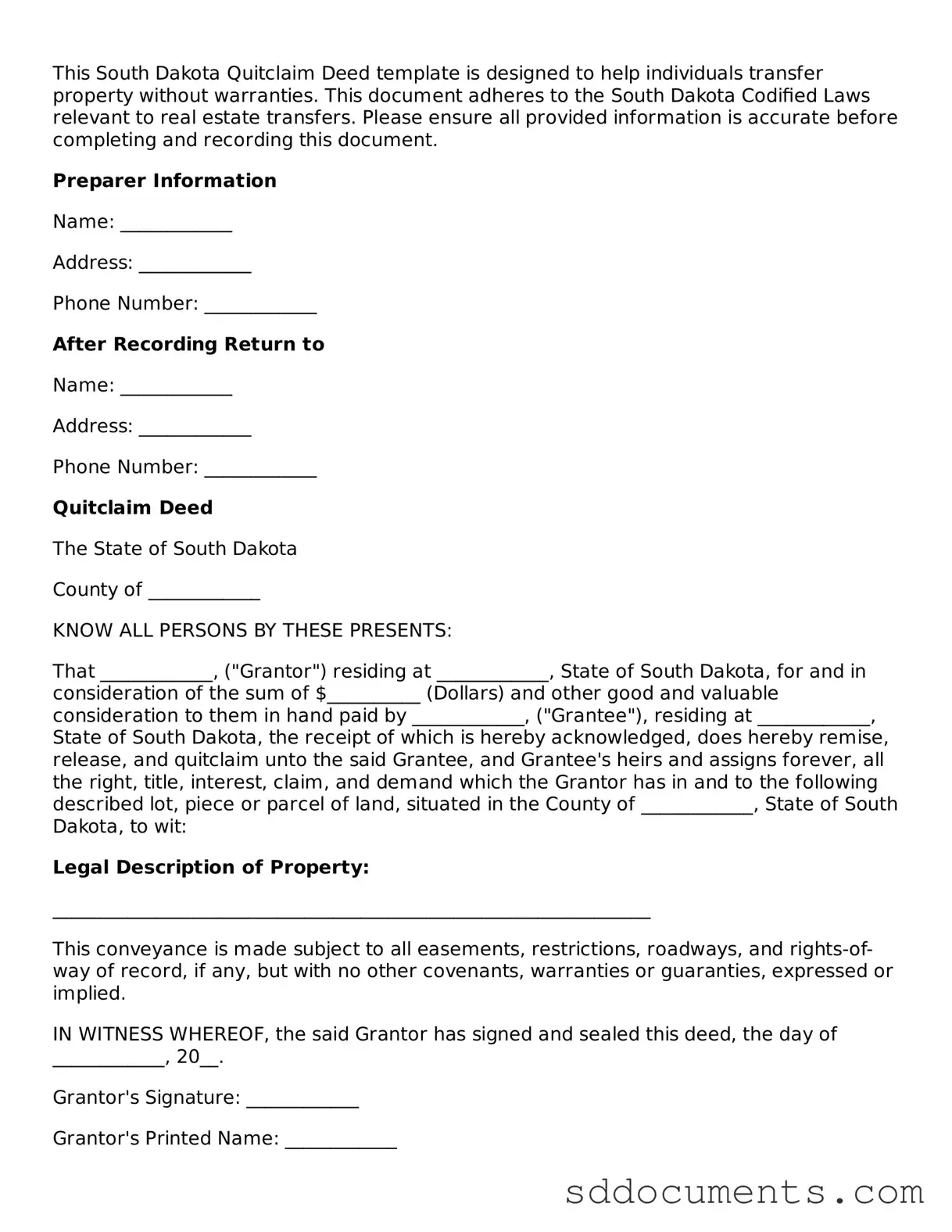Free Quitclaim Deed Template for South Dakota
A Quitclaim Deed is a legal document that allows a property owner to transfer their interest in real estate to another party without making any guarantees about the title's validity. This form is particularly useful in situations such as transferring property between family members or clearing up title issues. If you're ready to fill out the South Dakota Quitclaim Deed form, click the button below.
Customize Document Online
